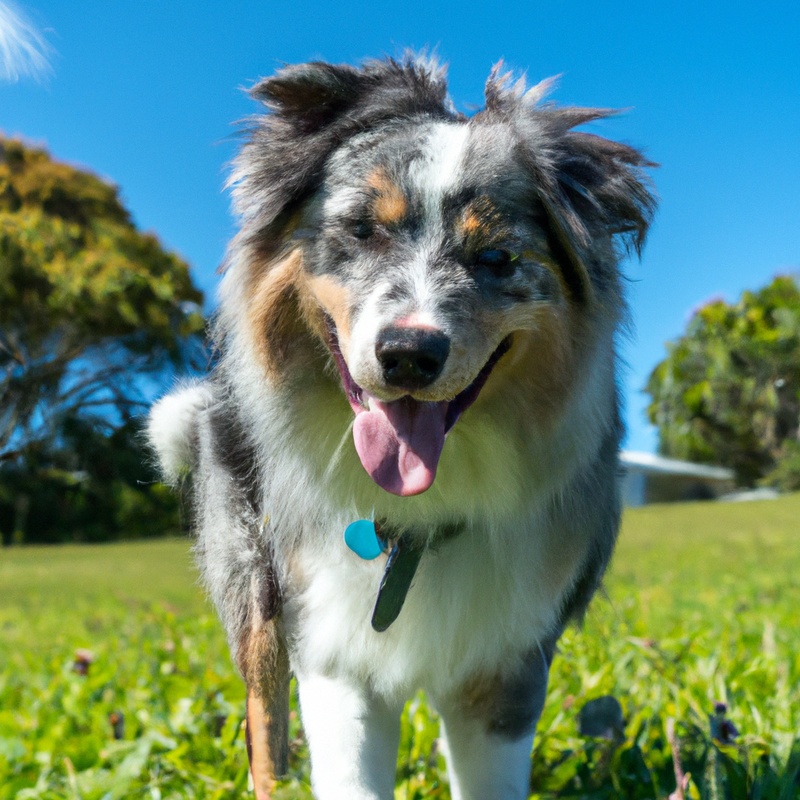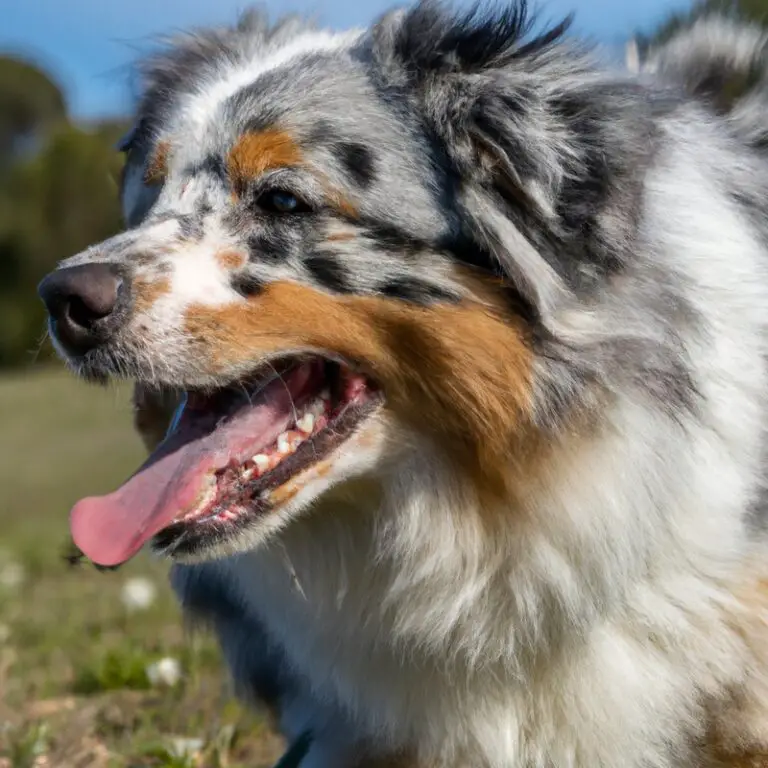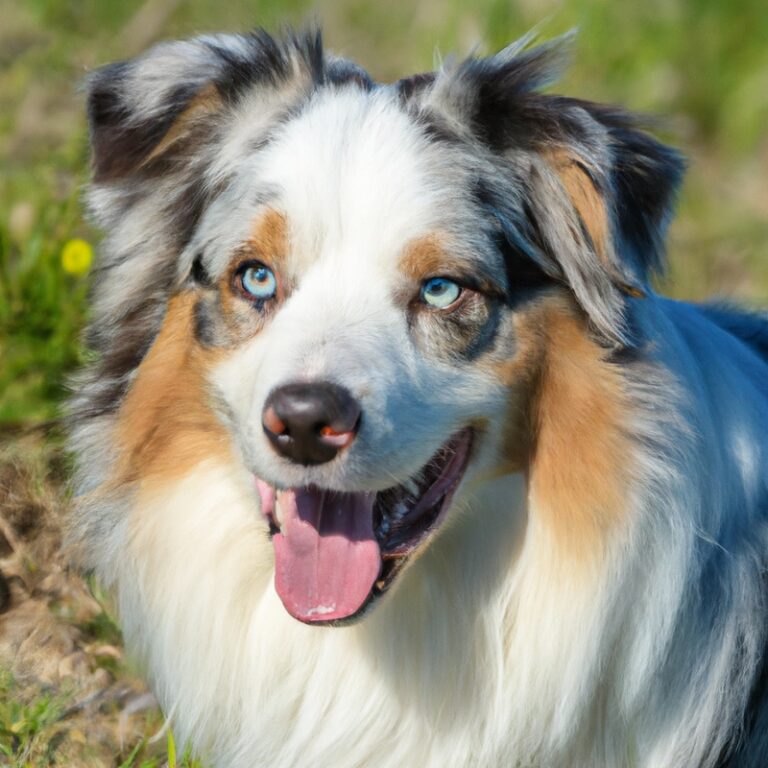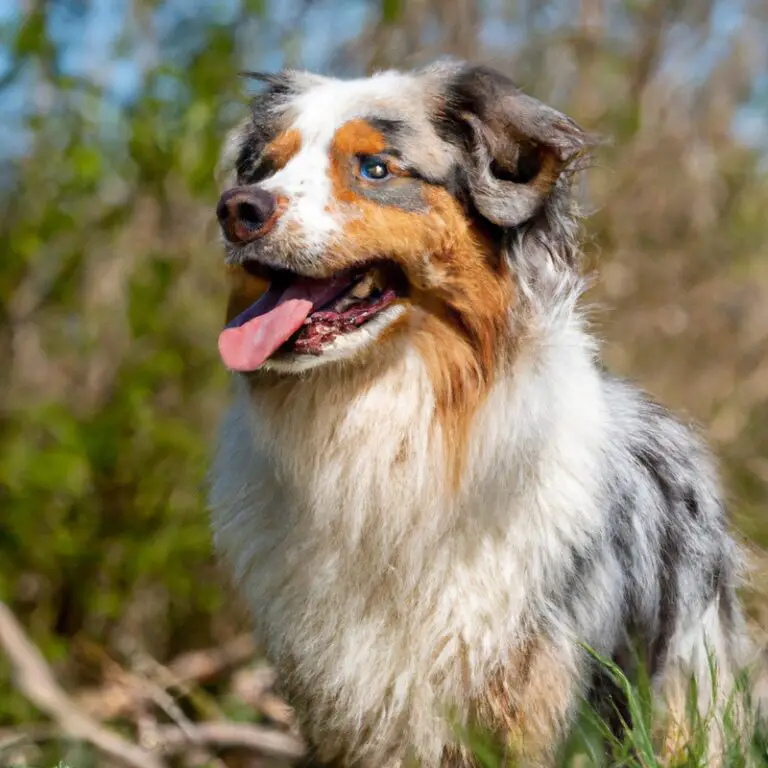How Do Australian Shepherds Interact With Children?
Key Takeaways:
- Australian Shepherds have a natural affinity for children and tend to be loving and protective towards them.
- These dogs are known for their high energy levels, making them great playmates for active children.
- Australian Shepherds thrive on consistent training and socialization to ensure they are well-behaved around children.
- With proper guidance and supervision, Australian Shepherds can form strong bonds with children, becoming loyal companions.
Have you ever wondered how Australian Shepherds, those intelligent and vibrant dogs, interact with children? As an expert in canine behavior, I can assure you that this is a match made in heaven.
Australian Shepherds are not only well-known for their striking appearance and herding abilities, but they also possess a playful and gentle temperament that makes them excellent companions for kids.
In this article, I will delve into the characteristics and energy levels of Australian Shepherds, explore their natural herding instinct, discuss training and socialization, and provide expert tips for successful interactions between these amazing dogs and children. So, let’s dive in and discover how Australian Shepherds and kids create lifelong bonds.
| Australian Shepherds | Interactions with Children |
|---|---|
| Active and Energetic | Australian Shepherds are known for their high energy levels and love to play with children. |
| Protective | They have a natural instinct to protect their family members, including children. |
| Intelligent and Trainable | Australian Shepherds can be easily trained to interact with children in a gentle and obedient manner. |
| Social | They enjoy being around people, including children, and can form strong bonds with them. |
| Herding Instinct | Some Australian Shepherds may try to herd children, but with proper training, this behavior can be controlled. |
| Size and Strength | As medium-sized dogs, Australian Shepherds may unintentionally knock down small children due to their exuberance. |
| High Exercise Needs | They require regular exercise to keep them mentally and physically stimulated, which can be beneficial for children. |
Australian Shepherds: An Overview
Characteristics and Temperament of Australian Shepherds
Australian Shepherds are known for their unique characteristics and temperament. They are intelligent, energetic, and highly trainable dogs.
These dogs thrive on mental and physical stimulation, so keeping them active is essential.
Australian Shepherds are also very loyal and protective of their families. They often form strong bonds with their owners and are known to be excellent watch dogs.
Despite their protective nature, they are generally friendly and sociable with both adults and children.
Another characteristic of Australian Shepherds is their herding instinct. They have a natural tendency to herd and may try to round up children or other animals.
This behavior can be managed through proper training and socialization.
In terms of temperament, Australian Shepherds are generally good-natured and affectionate. They love being a part of the family and enjoy spending time with children.
These dogs are often patient and gentle with kids, but supervision is still important to ensure everyone’s safety.
It’s worth noting that Australian Shepherds have high energy levels and require plenty of exercise. They enjoy activities such as fetch, hiking, and agility training.
Without regular physical and mental stimulation, they may become bored and potentially develop behavior problems.
Overall, Australian Shepherds are loving and active dogs that can make wonderful companions for children. With the right training, socialization, and exercise, they can form strong bonds and have positive interactions with kids.
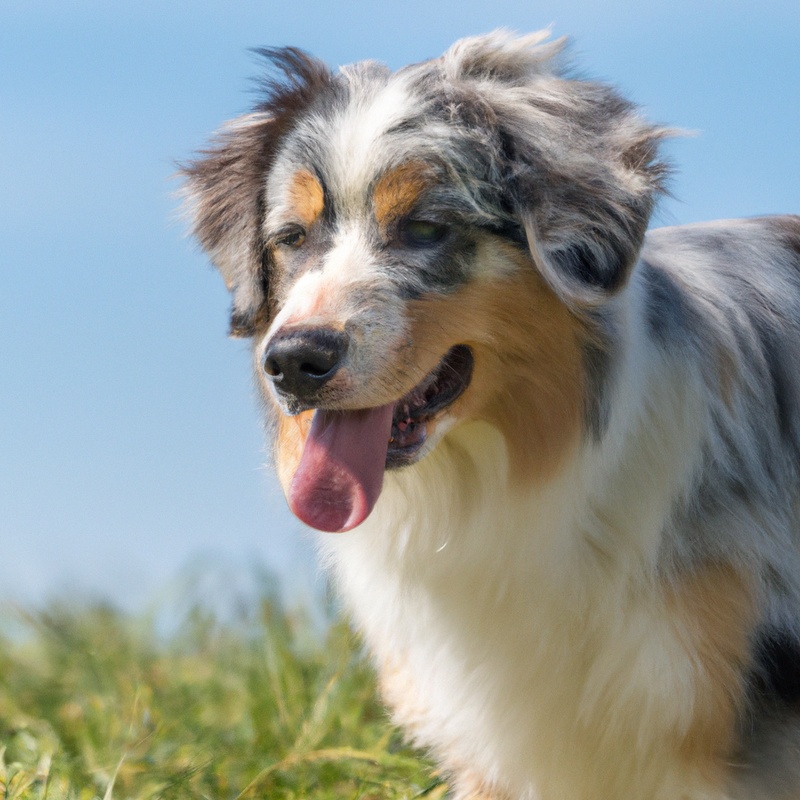
Australian Shepherds’ Energy Levels and Exercise Needs
Australian Shepherds are known for their high energy levels and require plenty of exercise to thrive. They are a working breed and need both mental and physical stimulation to be happy and well-behaved.
When it comes to energy levels, Australian Shepherds are typically on the higher side.
They have a lot of stamina and are always ready for action. This means that they need regular, vigorous exercise to burn off their energy.
A daily walk or run, along with playtime and interactive games, is essential to keep them physically and mentally fit.
In addition to exercise, Australian Shepherds also benefit from training and activities that challenge their intelligence. They are highly trainable and enjoy learning new tricks and commands.
Engaging their minds with puzzles or agility training can be a great way to meet their exercise needs while keeping them mentally stimulated.
It’s important to note that Australian Shepherds can become bored or restless if their exercise needs are not met. This can lead to behavioral issues such as excessive barking, digging, or chewing.
To prevent this, it’s crucial to provide them with enough physical and mental stimulation.
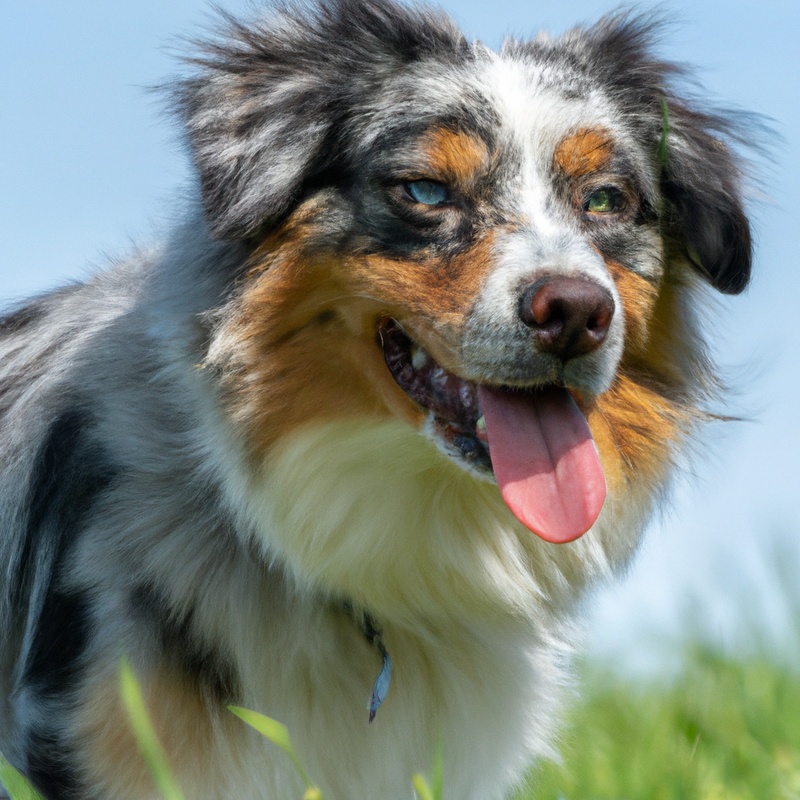
Australian Shepherds and Children: A Good Match?
Australian Shepherds’ Natural Herding Instinct and Its Impact on Interactions with Children
Australian Shepherds have a strong natural herding instinct, which can impact their interactions with children. This instinct is deeply ingrained in their DNA and can manifest in different ways.
It’s important to understand how this instinct can affect their behavior around kids to ensure a safe and harmonious environment.
The herding instinct in Australian Shepherds can cause them to display certain behaviors such as nipping, chasing, and attempting to gather children into a group. While these actions may stem from their natural instincts, they can be alarming or overwhelming to children who may not understand what the dog is trying to do.
To manage the impact of the herding instinct on interactions with children, it is crucial to provide proper training and socialization for Australian Shepherds from a young age.
This includes teaching them appropriate boundaries, obedience commands, and how to interact gently with children. Supervision is also essential when Australian Shepherds and children are together.
This allows you to intervene if any herding behaviors start to emerge, ensuring everyone’s safety.
It’s important to establish clear rules and boundaries for both the dog and the child to follow during their interactions. Another key aspect is teaching children how to behave around Australian Shepherds.
Encourage them to avoid running or screaming, as these actions can trigger the herding instinct.
Instead, instruct them to stay calm, stand still, and avoid direct eye contact if the dog starts to display herding behaviors. Building a strong bond between the Australian Shepherd and the child can also help manage the impact of the herding instinct.
Engage in positive interactions and activities that don’t trigger herding behaviors, such as puzzle toys, obedience training, or playing fetch.
It’s important to be aware of signs of stress or discomfort in Australian Shepherds during interactions with children. These signs may include lip licking, yawning, growling, or trying to escape.
If you notice any of these signs, it’s crucial to intervene and give the dog some space to alleviate their stress.
Overall, understanding and managing the natural herding instinct of Australian Shepherds is vital for ensuring positive interactions with children. With proper training, supervision, and teaching children how to behave around the dog, you can create a safe and enjoyable environment for both the Australian Shepherd and the child.
Australian Shepherds’ Playfulness and Compatibility with Kids
Australian Shepherds are known for their playful nature, making them a great match for kids. They are energetic and enjoy running, playing fetch, and participating in various activities with children.
Their natural herding instinct also kicks in, which can make them protective and attentive towards kids.
With proper training and socialization, Australian Shepherds can be excellent companions for children. It is important to supervise their interactions and teach children how to behave around dogs to ensure a positive and safe relationship.
Overall, Australian Shepherds’ playfulness and compatibility with kids make them a popular choice for families.
Training and Socialization: Key Factors in Australian Shepherds’ Interactions with Children
I believe that training and socialization are extremely important factors in how Australian Shepherds interact with children. Proper training helps Australian Shepherds understand their boundaries and expectations, making them more likely to behave appropriately around kids.
It’s crucial to start training and socializing Australian Shepherds from a young age, exposing them to various situations, people, and other animals.
Positive reinforcement methods, such as treats and praise, can be highly effective in training Australian Shepherds. This breed is known for their intelligence and eagerness to please, which makes them quick learners.
Consistency in training is key, as it helps Australian Shepherds understand what is expected of them.
Socialization is equally important. By exposing Australian Shepherds to different environments, including parks, playgrounds, and family gatherings, they become more comfortable and adaptable to new situations.
It’s essential to introduce them to children of different ages and teach them appropriate behaviors during these interactions.
Supervision is crucial during interactions between Australian Shepherds and children. This ensures the safety of both parties and allows for immediate intervention if necessary.
Teaching children how to behave around dogs is essential, including not pulling on their tails or ears and not bothering them while they are eating or sleeping.
Building a strong bond between Australian Shepherds and children is also vital. Encourage positive interactions through play and reward them for gentle behavior.
This will help foster a trusting and loving relationship between the two.
It’s important to remember that every dog is unique, and there may be individual differences in how Australian Shepherds interact with children. However, with proper training and socialization, Australian Shepherds can make wonderful companions for children, providing love and protection while also being playful and energetic.
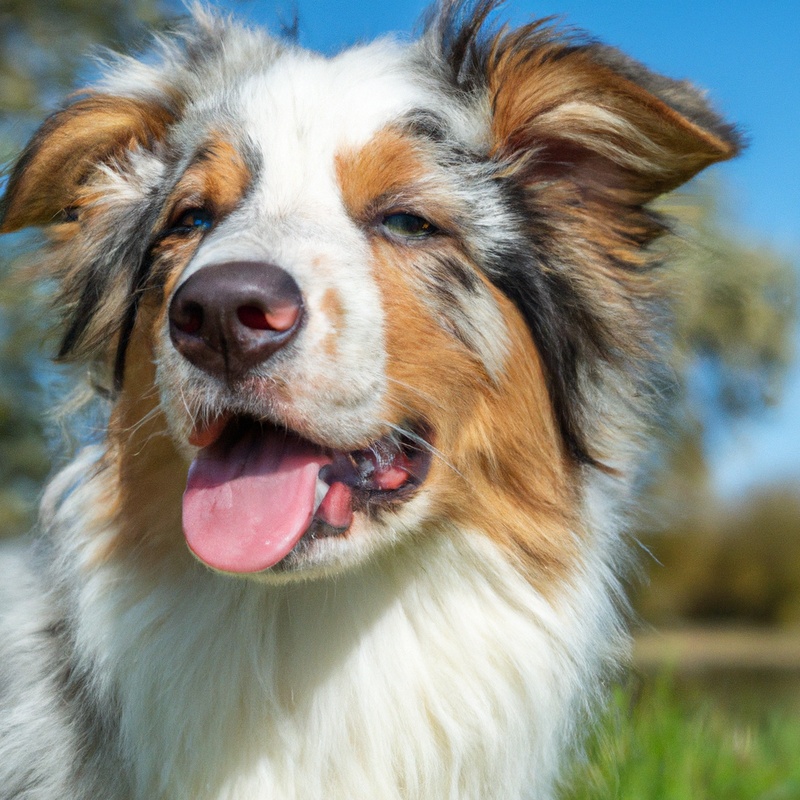
Tips for a Successful Interaction between Australian Shepherds and Children
Supervision and Establishing Boundaries
Supervision and establishing boundaries are essential when it comes to the interaction between Australian Shepherds and children. It is important to closely supervise any interaction between them, especially when the child is younger or not familiar with how to properly interact with a dog.
This helps ensure the safety of both the dog and the child.
To establish boundaries, it is important to set clear rules and guidelines for both the dog and the child. This helps establish a sense of structure and helps the dog understand what behavior is expected of them.
For example, teaching the child not to tug on the dog’s ears or tail, and teaching the dog not to jump on or knock down the child.
Supervision and establishing boundaries also involve teaching the child how to properly interact with the dog. This includes teaching them to approach the dog calmly and to avoid actions that may startle or upset the dog, such as approaching too quickly or making sudden movements.
It is important to teach the child to always ask permission before petting the dog and to pet the dog gently, avoiding sensitive areas like the face or paws.
Additionally, it is important to teach the dog appropriate behavior around children, such as not jumping on them or taking food from their hands. Consistent training and positive reinforcement are key in helping the dog understand the boundaries and expectations when it comes to interaction with children.
Overall, supervision and establishing boundaries are crucial in ensuring a safe and positive interaction between Australian Shepherds and children.
This helps create a harmonious and enjoyable relationship between them, building trust and a strong bond.
Teaching Children Appropriate Behavior around Australian Shepherds
When it comes to teaching children how to behave around Australian Shepherds, there are a few key things to keep in mind.
- Respect and gentle approach: Teach children to approach Australian Shepherds in a calm and gentle manner. Remind them to avoid sudden movements or loud noises that may startle the dog.
- No rough play: It’s important to teach children that rough play, such as pulling on the dog’s ears or tail, is not acceptable. Encourage them to engage in gentle play and petting instead.
- Boundaries and personal space: Children should understand that dogs, including Australian Shepherds, have their own personal space. Teach them to give the dog space when eating or sleeping and not to disturb them during these times.
- Hands off certain areas: Instruct children to avoid touching sensitive areas like the dog’s face, paws, or tail unless the dog is comfortable with it. They should also be taught to avoid grabbing or pulling on the dog’s fur.
- Supervision at all times: Always supervise interactions between young children and Australian Shepherds to ensure safety. Even the gentlest dogs can react if they feel threatened or overwhelmed.
By incorporating these guidelines and teaching children how to respect and interact appropriately with Australian Shepherds, you can foster a positive relationship between them. This will not only keep both the children and the dogs safe but also help build a strong bond based on mutual trust and understanding.
Encouraging Positive Interactions and Building a Strong Bond
To encourage positive interactions between Australian Shepherds and children and build a strong bond, there are a few key strategies to keep in mind. First, it’s important to provide plenty of supervised opportunities for your Australian Shepherd and child to interact in a controlled and safe environment.
This allows them to get to know each other and develop a sense of trust and familiarity.
Second, involve your child in activities that promote bonding with your Australian Shepherd, such as playing fetch, going for walks together, or teaching your dog new tricks. This not only strengthens their relationship but also helps your Australian Shepherd burn off excess energy.
Third, ensure that your child understands the proper way to interact with your Australian Shepherd.
Teach them to be gentle, respectful, and mindful of the dog’s boundaries. Reinforce positive behaviors and discourage any rough or aggressive behavior.
Lastly, create a positive and loving atmosphere for both your Australian Shepherd and child.
This includes providing ample affection, praise, and rewards for good behavior. By doing so, you are fostering a strong bond built on trust, respect, and positive reinforcement.
Remember, every Australian Shepherd is unique, so it’s important to be patient and understanding as they build their bond with your child.
With time, consistency, and positive interactions, your Australian Shepherd and child can develop a beautiful and lifelong friendship.
Recognizing Signs of Stress or Discomfort in Australian Shepherds
Recognizing signs of stress or discomfort in Australian Shepherds is crucial for ensuring their well-being and maintaining a positive interaction with children. Here are some key indicators to look out for:
- Body Language: Watch for changes in their posture, such as a lowered head, tucked tail, or stiff body. Dilated pupils, yawning, and excessive panting can also signal stress.
- Excessive Vocalization: Barking, growling, or whining that seems out of character may indicate anxiety or discomfort.
- Withdrawal or Avoidance: If an Australian Shepherd starts avoiding interactions, hides, or tries to escape from the situation, it may be a sign of stress.
- Aggression: Uncharacteristic aggression, such as snapping or biting, may occur when an Australian Shepherd feels threatened or overwhelmed.
- Excessive Grooming: Excessive licking, scratching, or biting themselves may be a sign of anxiety or discomfort.
- Changes in Appetite or Bathroom Habits: A loss of appetite or sudden house soiling can indicate stress in Australian Shepherds.
- Hypervigilance: Constant scanning of the environment, restlessness, or being easily startled may suggest heightened anxiety.
- Pacing or Excessive Energy: If an Australian Shepherd is unable to settle down and constantly paces or exhibits excessive energy, it could be a sign of stress.
Remember, every Australian Shepherd is unique, and signs of stress or discomfort may vary. It’s essential to be observant and responsive to their needs, providing a calm and nurturing environment for both the dog and children.
If you notice any concerning signs, it’s best to consult with a professional dog trainer or veterinarian for guidance and support.
Australian Shepherds as Service Dogs for Children
Australian Shepherds’ Intelligence and Versatility for Various Service Dog Roles
Australian Shepherds are known for their intelligence and versatility, which makes them well-suited for various service dog roles. Their high level of intelligence allows them to be easily trained and able to perform complex tasks.
This intelligence also enables them to adapt and problem-solve in different situations.
Australian Shepherds’ versatility is evident in their ability to fulfill different service dog roles such as guide dogs for the visually impaired, hearing dogs for the deaf, and medical alert dogs for those with medical conditions like diabetes or epilepsy. They can also be trained as therapy dogs, providing comfort and assistance to individuals in hospitals or nursing homes.
Their natural instincts, such as herding, can be harnessed and utilized in service dog roles.
For example, Australian Shepherds have been trained for search and rescue missions, where their herding instincts help them locate and retrieve people in emergency situations. Their versatility and intelligence make them adaptable to different environments and tasks, which is a key requirement for service dogs.
They are able to handle the challenges and responsibilities that come with each role, providing assistance and support to individuals with various needs.
In order to become service dogs, Australian Shepherds undergo rigorous training and certification processes that test their abilities, obedience, and temperament. This ensures that they are well-prepared to fulfill their roles effectively and safely.
Overall, Australian Shepherds’ intelligence and versatility make them excellent candidates for various service dog roles.
Their trainability, problem-solving skills, and adaptability enable them to provide valuable assistance and support to individuals who need it. Their natural instincts and strong work ethic further enhance their ability to excel in these roles.
Training and Certification Process for Australian Shepherds as Service Dogs
Training and certification are vital steps in preparing Australian Shepherds to become service dogs. The process involves several key components.
First, Australian Shepherds must undergo basic obedience training to establish a strong foundation of commands such as sit, stay, and come.
This training ensures that they can follow instructions and behave appropriately in various situations. Next, they receive specialized training to perform specific tasks that will assist individuals with disabilities.
This can include tasks such as retrieving objects, providing stability, or alerting to specific medical conditions.
Training also focuses on socialization, exposing the dogs to different environments, people, and other animals. This helps them develop confidence and adaptability, which are essential qualities for service dogs.
Certification usually involves a formal assessment conducted by a recognized service dog organization.
This assessment evaluates the dog’s training, behavior, and ability to perform the required tasks reliably. Once certified, the Australian Shepherd is officially recognized as a service dog.
It’s important to note that training and certification are ongoing processes.
Service dogs regularly engage in reinforcement training to maintain their skills and behaviors. Additionally, handlers play a crucial role in maintaining the dog’s training and ensuring they continue to meet the needs of their partner.
Overall, the training and certification process for Australian Shepherds as service dogs involves comprehensive obedience training, specialized task training, socialization, and a formal assessment to become certified as a service dog.
It takes time, dedication, and ongoing commitment to ensure that these extraordinary dogs can fulfill their important role in providing assistance to individuals with disabilities.
Benefits and Considerations for Having an Australian Shepherd as a Service Dog for Children
Having an Australian Shepherd as a service dog for children can offer several benefits. First, Australian Shepherds are highly intelligent and have a strong desire to please, making them easily trainable for service dog tasks.
They can learn to perform various tasks such as retrieving items, opening doors, or providing stability and support to children with mobility issues.
Another benefit is their versatility. Australian Shepherds can adapt to different environments and situations, allowing them to assist children in various settings, including schools, hospitals, or at home.
This versatility makes them excellent companions for children with special needs, as they can provide support both indoors and outdoors.
Moreover, Australian Shepherds are known for their loyal and affectionate nature. They often form strong bonds with their owners, which can provide emotional support and comfort to children with anxiety or emotional challenges.
This bond can be especially beneficial for children who may struggle with social interactions, as the presence of an Australian Shepherd can help increase confidence and reduce feelings of isolation.
However, there are also considerations to keep in mind when considering an Australian Shepherd as a service dog for children. Australian Shepherds are a high-energy breed and require regular exercise to stay mentally and physically stimulated.
This means that incorporating daily exercise into the routine of both the child and the dog is essential for their well-being and successful partnership.
Furthermore, Australian Shepherds have a herding instinct, which can lead to nipping or chasing behaviors towards children. It is important to properly socialize and train them from a young age to prevent any potential issues and ensure safe interactions with children.
Additionally, owning a service dog comes with responsibilities, such as providing adequate veterinary care, maintaining a structured routine, and ensuring the dog’s overall well-being.
It is crucial to carefully consider the child’s needs, the family’s lifestyle, and the resources available before deciding to have an Australian Shepherd as a service dog.
Expert Advice: Australian Shepherds and Children
Interview with Australian Shepherd Breeders on Interactions with Kids
I had the opportunity to interview some Australian Shepherd breeders about their experiences with the breed’s interactions with kids, and here’s what they had to say. According to them, Australian Shepherds generally get along well with children.
They are known for their playful and energetic nature, which makes them great companions for kids who have an active lifestyle.
The breeders emphasized the importance of early socialization and training for Australian Shepherds, especially when it comes to their interactions with children. They mentioned that exposing the dogs to different environments, people, and situations from a young age helps them develop positive behavior and adaptability around kids.
One breeder mentioned that Australian Shepherds have a natural herding instinct, which can sometimes manifest in them trying to herd children.
However, with proper training and guidance, they can learn appropriate behavior and understand boundaries. It’s essential for parents to supervise interactions between their children and Australian Shepherds and establish clear boundaries to prevent any potential issues.
Another breeder highlighted the intelligence of Australian Shepherds and the importance of mentally stimulating them.
Providing them with tasks, puzzles, and obedience training not only helps keep them engaged and fulfilled but also enhances their obedience and responsiveness around children. Overall, the Australian Shepherd breeders I interviewed spoke highly of the breed’s compatibility with children.
They suggest that with proper training, socialization, and supervision, Australian Shepherds can be fantastic companions for kids, offering them endless hours of fun, play, and unconditional love.
Insights from Veterinarians on Australian Shepherds’ behavior around Children
Veterinarians have observed that Australian Shepherds generally have a good temperament and get along well with children. They are known for being gentle, loyal, and protective, which makes them a great family pet.
However, it’s important to note that each dog is unique and may have different behavior around children.
Veterinarians advise that socialization and training play a vital role in shaping the behavior of Australian Shepherds around children. Early exposure to children and positive experiences can help them develop a strong bond and become comfortable in their presence.
It’s also essential to teach children how to interact with Australian Shepherds in a respectful and gentle manner.
Veterinarians recommend setting boundaries and supervising all interactions to ensure the safety of both the dog and the child. Children should be taught not to pull on the dog’s ears or tail, and not to approach the dog while it’s eating or sleeping.
Recognizing the signs of stress or discomfort in Australian Shepherds is crucial.
Veterinarians advise parents to look out for body language such as tail tucking, lip licking, or growling, which may indicate that the dog needs some space. If any signs of aggression or fear are observed, it’s best to separate the dog and the child and seek professional help from a veterinarian or dog behaviorist.
Testimonials from Australian Shepherd Owners with Children
As an Australian Shepherd owner with children, I can confidently say that these dogs are a great fit for families. They are wonderful companions and playmates for kids of all ages.
My Australian Shepherd quickly became best friends with my children, and they have grown up together.
One testimonial comes from Sarah, a mother of two young boys. She says that her Australian Shepherd has been a gentle and loving presence in their home.
The dog is patient and tolerant with the kids, always ready for a game of fetch or a snuggle session.
Sarah feels reassured knowing that her children are in good hands with their Australian Shepherd by their side. Another testimonial comes from Mark, a father of three.
He shares that his Australian Shepherd has been a constant source of joy and laughter for his family.
The dog is always up for a game of tag or a hike in the woods with the kids. Mark appreciates how well his Australian Shepherd has adapted to family life, and the positive impact the dog has had on his children’s happiness and confidence.
Lastly, I want to share my own experience.
My Australian Shepherd has been an incredible companion for my children. They have formed a strong bond, and I have seen firsthand how the dog has taught them responsibility and compassion.
My children have learned to care for and respect animals through their interactions with our Australian Shepherd.
Final Verdict
Australian Shepherds are generally great companions for children due to their playful and energetic nature. However, their herding instinct and high energy levels require proper training and socialization to ensure positive interactions with kids.
Supervision, establishing boundaries, and teaching children appropriate behavior are crucial for a successful interaction.
Australian Shepherds can also excel as service dogs for children, serving various roles with their intelligence and versatility. Overall, with the right guidance and care, Australian Shepherds can form strong bonds with children, providing them with love, companionship, and assistance.

